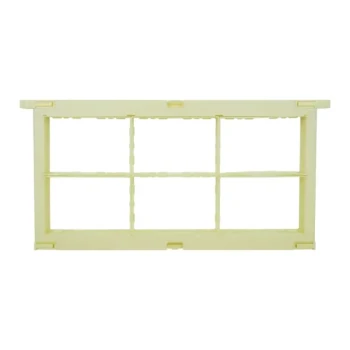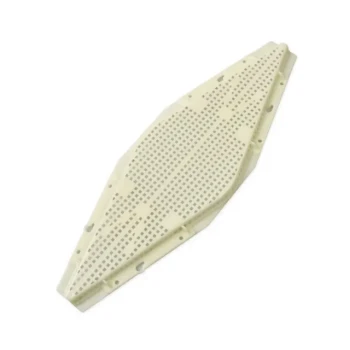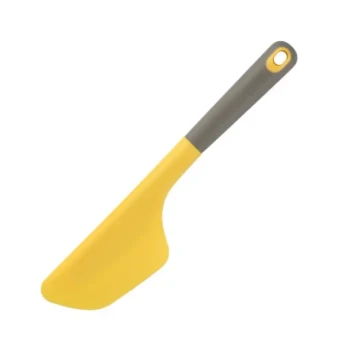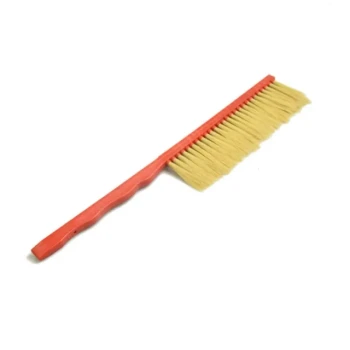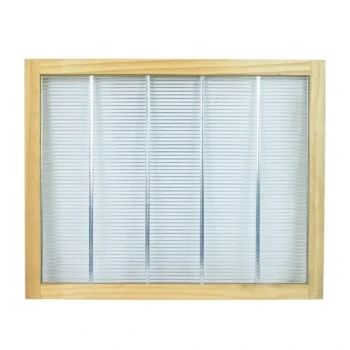The right month to add honey supers is not fixed on a calendar, but is instead determined by your colony's strength and the local nectar flow. While beekeepers in some regions might add supers as early as mid-April, the key is to observe your hive's specific signals. These signals typically emerge in the spring, just before the main summer honey flow begins.
The most common mistake is supering based on a date. The correct approach is to add a super only when the bees have filled 70-80% of the frames in their top-most box, signaling they need more space for incoming nectar and to prevent the hive from swarming.
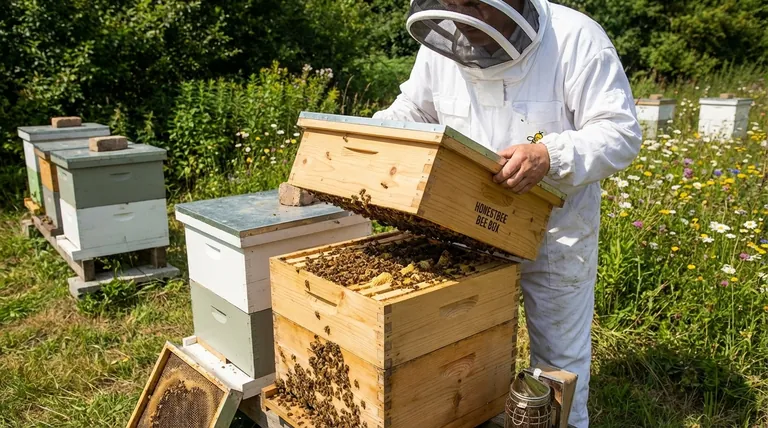
The Core Principle: Supering is About Space, Not the Calendar
Adding a honey super is a critical management decision. The goal is to give the colony more space precisely when they need it. Timing this correctly requires you to think like the bees and anticipate their needs based on population and environment, not a human calendar.
Understanding the Nectar Flow
A nectar flow (or honey flow) is a period when one or more major floral sources are blooming profusely, providing a surplus of nectar. This is the time when bees can collect far more than they need for daily survival.
Your job as a beekeeper is to ensure the hive has empty storage space ready just as this flow begins. The timing of the flow is entirely dependent on your local climate and plant life.
Preventing "Swarm Mode"
When a hive becomes too crowded, it triggers a natural reproductive instinct: swarming. The queen's laying space becomes restricted, and foragers have nowhere to store incoming nectar.
Adding a super relieves this "brood nest congestion." It provides immediate storage space for nectar, freeing up cells in the brood boxes for the queen to lay eggs and keeping the colony focused on production rather than division.
Reading the Hive: Key Signals for Supering
Instead of watching the calendar, watch your bees. They will give you clear, unmistakable signals when they are ready for their first honey super.
The 70-80% Rule
This is the most reliable metric. Open your hive and look at the top-most box. If the bees are actively using seven or eight of the ten frames (or six of eight), it is time to add a super.
"Using" means the frames are covered with bees and contain a mix of brood, pollen, and nectar. If the outer two frames are still mostly empty, it's too soon.
Spotting "Whitening" or "Burr Comb"
When a strong nectar flow begins, bees excrete fresh wax. You will see them build new, bright white comb on the top bars of the frames or between boxes. This is called whitening or burr comb.
This is an urgent signal. It means the bees have an excess of resources and are desperately looking for new space to build and store.
Observing Forager Activity
Pay attention to the hive entrance. A dramatic increase in the number of bees flying in and out is a strong indicator that a nectar flow is on.
Bees returning to the hive will look plump, and many will be carrying heavy loads of brightly colored pollen on their legs. This confirms that major floral sources are available.
Understanding the Trade-offs of Timing
Correct timing is a balance. Acting too early or too late both come with significant consequences for the health of your colony and the size of your honey harvest.
The Risk of Supering Too Early
Adding a large, empty box to a colony that isn't strong enough to occupy it is a common mistake. The bees must expend energy patrolling and warming this "dead air" space.
This diverts resources away from raising brood, can chill the colony, and creates undefended territory that is highly attractive to pests like wax moths and small hive beetles.
The Cost of Supering Too Late
Waiting too long is far more costly. If you miss the start of the honey flow, you lose out on that portion of your potential honey crop.
More importantly, a congested hive will almost certainly swarm. When a hive swarms, you lose up to half of your workforce and your old queen, severely setting back the colony's productivity for the rest of the season.
Making the Right Choice for Your Colony
Base your decision on hive inspection, not assumptions. Check your strongest colonies every 7-10 days during the spring build-up to avoid being caught by surprise.
- If your primary focus is swarm prevention: Add a super the moment the top box hits the 70-80% capacity mark, even if the nectar flow seems weak.
- If your primary focus is maximum honey: Pay close attention to local nectar sources and add the super just as the major blooms open and you see whitening on the top bars.
- If you manage a new or weaker colony: Be patient and wait for them to fully build out their brood boxes before adding a super, as supering too early can set them back significantly.
Ultimately, learning to read your bees' needs is the skill that separates a good beekeeper from a great one.
Summary Table:
| Key Signal | What to Look For | Action to Take |
|---|---|---|
| 70-80% Rule | Top box frames are 70-80% full of bees, brood, and nectar. | Add a super immediately. |
| Whitening/Burr Comb | Bees build bright white wax on top bars between boxes. | Add a super urgently; a strong flow has started. |
| High Forager Activity | Heavy traffic at the entrance with bees carrying pollen. | A nectar flow is likely on; prepare to super. |
| Risk of Swarming | Hive feels congested; queen's laying space is restricted. | Add a super to relieve congestion and prevent swarming. |
Ready to Equip Your Apiary for a Bountiful Season?
Timing your honey supers perfectly is just one part of successful beekeeping. Having reliable, high-quality equipment is essential for supporting your colonies' growth and maximizing your harvest.
HONESTBEE is your trusted partner, supplying durable beekeeping supplies and equipment directly to commercial apiaries and beekeeping equipment distributors through our wholesale-focused operations. We help you build a stronger, more productive operation.
Let's discuss your needs for the upcoming season. Contact our team today to get a quote on essential supplies like honey supers, frames, and more.
Visual Guide
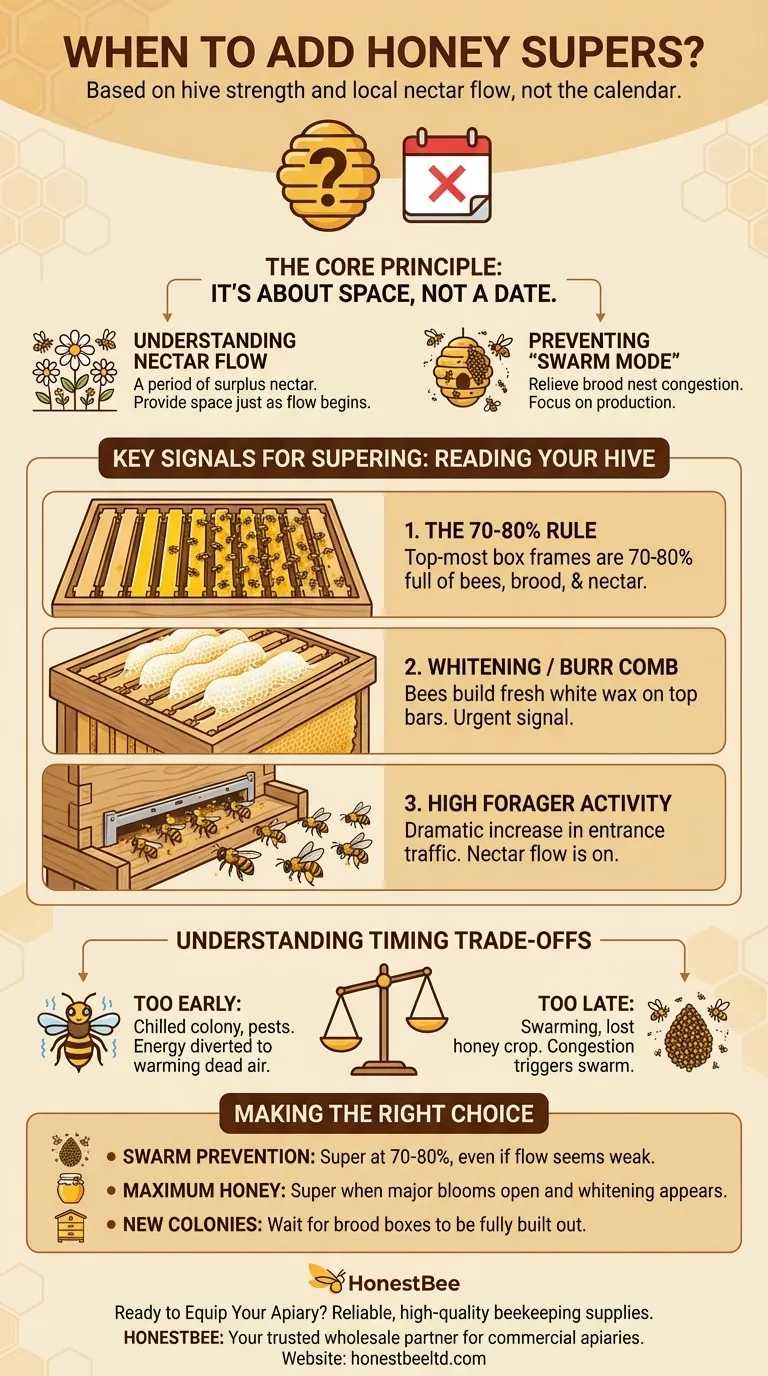
Related Products
- Langstroth Honey Bee Box Hive Boxes for Different Depths
- Professional 500g Sectional Comb Honey Frame System for Beekeeping
- Economy Small Scale Honey Dryer Dehumidifier Thickening Machine
- High-Efficiency Diamond Maze Bee Escape for Clearing Supers
- Commercial 48-Frame Stainless Steel Honey Extractor
People Also Ask
- How is checking honey supers in a Langstroth hive different from inspecting Honey Flow supers? A Guide to Disruptive vs. Non-Invasive Methods
- What is the purpose of the boxes in a Langstroth hive? A Guide to Modular Beekeeping Success
- How deep is a medium bee box? Unlock the Key to a Versatile and Manageable Hive
- What are the sizes of supers available in a standard hive? A Guide to Deep, Medium, and Shallow Boxes
- How should hive boxes be aligned after reassembly? Ensure a Perfect Seal for Hive Health

